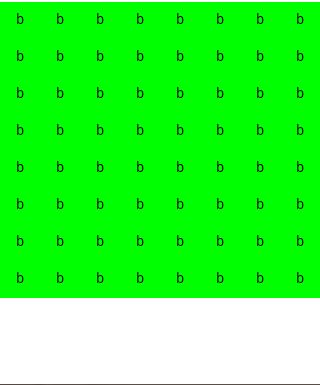ACM详解(5)——排序
有些ACM题需要使用一些基本的数据结构,下面首先介绍与排序相关的内容。
1、基本排序
Problem Description
These days, I am thinking about a question, how can I get a problem as easy as A+B? It is fairly difficulty to do such a thing. Of course, I got it after many waking nights.
Give you some integers, your task is to sort these number ascending (升序).
You should know how easy the problem is now!
Good luck!
Input
Input contains multiple test cases. The first line of the input is a single integer T which is the number of test cases. T test cases follow. Each test case contains an integer N (1<=N<=1000 the number of integers to be sorted) and then N integers follow in the same line.
It is guarantied that all integers are in the range of 32-int.
Output
For each case, print the sorting result, and one line one case.
Sample Input
2
3 2 1 3
9 1 4 7 2 5 8 3 6 9
Sample Output
1 2 3
1 2 3 4 5 6 7 8 9
翻译:对给定的数字序列进行排序。使用数据结构的基本排序算法即可。可以使用各种排序算法实现。另外在Java中提供了排序方法,可以使用Arrays.sort方法,参考下面的代码:
Arrays.sort(a);
其中a是需要排序的数组。
下面给出了冒泡排序的代码供参考:
/*
* 冒泡排序
*/
public static int[] sort(int[] a){
// Arrays.sort(a);
for(int i=0;i<a.length-1;i++){
for(int j=a.length-1;j>i;j--){
if(a[j]<a[j-1]){
int temp = a[j];
a[j] = a[j-1];
a[j-1] = temp;
}
}
}
return a;
}
2、DNA Sorting
Description
One measure of ``unsortedness in a sequence is the number of pairs of entries that are out of order with respect to each other. For instance, in the letter sequence ``DAABEC, this measure is 5, since D is greater than four letters to its right and E is greater than one letter to its right. This measure is called the number of inversions in the sequence. The sequence ``AACEDGG has only one inversion (E and D)---it is nearly sorted---while the sequence ``ZWQM has 6 inversions (it is as unsorted as can be---exactly the reverse of sorted).
You are responsible for cataloguing a sequence of DNA strings (sequences containing only the four letters A, C, G, and T). However, you want to catalog them, not in alphabetical order, but rather in order of ``sortedness, from ``most sorted to ``least sorted. All the strings are of the same length.
Input
The first line contains two integers: a positive integer n (0 < n <= 50) giving the length of the strings; and a positive integer m (0 < m <= 100) giving the number of strings. These are followed by m lines, each containing a string of length n.
Output
Output the list of input strings, arranged from ``most sorted to ``least sorted. Since two strings can be equally sorted, then output them according to the orginal order.
Sample Input
10 6
AACATGAAGG
TTTTGGCCAA
TTTGGCCAAA
GATCAGATTT
CCCGGGGGGA
ATCGATGCAT
Sample Output
CCCGGGGGGA
AACATGAAGG
GATCAGATTT
ATCGATGCAT
TTTTGGCCAA
TTTGGCCAAA
翻译:对于一个序列的无序性可以使用相互之间无序的元素组的个数表示,例如字母序列DAABEC的无序性是5,D大于后面的AABC,E大于后面的C。而AACEDGG的无序性是1,因为只有E和D之间的顺序是乱的。
题目要求:对于给定的多个字符串(长度相同,由A, C, G和T组成),从最有序到最无序进行排列。
解题思路:计算每个字符串的无序性,然后进行排序即可。参考下面的代码:
/*
* DNA sorting
*/
public static void test3(String[] dnas){
Map invertions = new HashMap();
// 计算每个字符串的乱序数量
for(int i=0;i<dnas.length;i++){
invertions.put(dnas[i], count(dnas[i]));
}
// 排序
for(int i=0;i<dnas.length-1;i++){
for(int j=dnas.length-1;j>i;j--){
if((Integer)(invertions.get(dnas[j]))<(Integer)(invertions.get(dnas[j-1]))){
String temp = dnas[j];
dnas[j] = dnas[j-1];
dnas[j-1] = temp;
}
}
}
// 输出
for(String temp:dnas){
System.out.println(temp+
补充:软件开发 , Java ,





